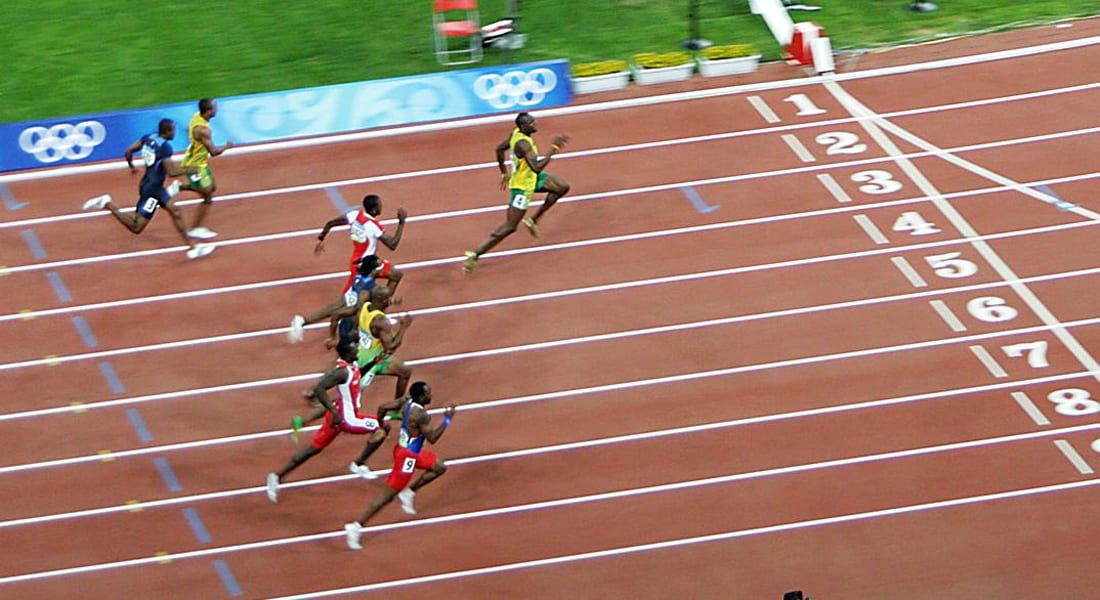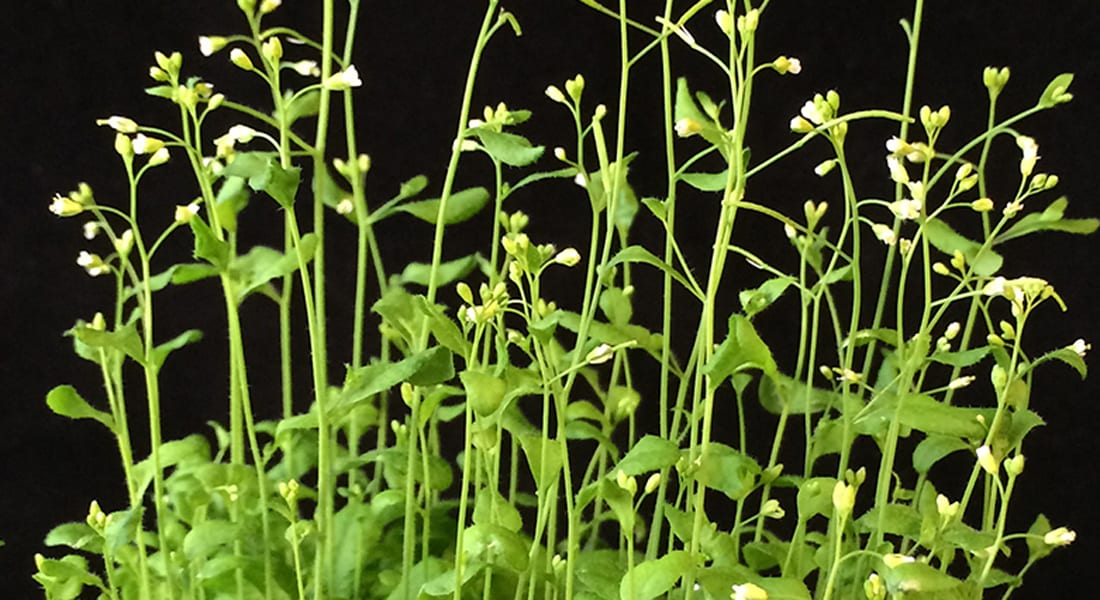Discovery may someday allow farmers to grow crops in climates where they currently won’t grow and allows scientists to make a subtle, targeted mutation to a specific native plant protein
Findings of a new study solve a key mystery about the chemistry of how plants tell time so they can flower and metabolize nutrients.
The process — a subtle chemical event — takes place in the cells of every plant every second of every day.
The new understanding means farmers may someday grow crops under conditions or in climates where they currently can’t grow, said chemist Brian D. Zoltowski, Southern Methodist University, Dallas, who led the study.
“We now understand the chemistry allowing plants to maintain a natural 24-hour rhythm in sync with their environment. This allows us to tune the chemistry, like turning a dimmer switch up or down, to alter the organism’s ability to keep time,” Zoltowski said. “So we can either make the plant’s clock run faster, or make it run slower. By altering these subtle chemical events we might be able to rationally redesign a plant’s photochemistry to allow it to adapt to a new climate.”
Specifically, the researchers figured out the chemical nuts and bolts of how a chemical bond in the protein Zeitlupe forms and breaks in reaction to sunlight, and the rate at which it does so, to understand how proteins in a plant’s cells signal the plant when to bloom, metabolize, store energy and perform other functions.
Zoltowski’s team, with collaborators at the University of Washington and Ohio State University, have made plant strains with specific changes to the way they are able to respond to blue-light.
“With these plants we demonstrate that indeed we can tune how the organisms respond to their environment in an intelligible manner,” Zoltowski said.
Zoltowski and his colleagues made the discovery by mapping the crystal structure of a plant protein whose function is to measure the intensity of sunlight. The protein is able to translate light intensity to a bond formation event that allows the plant to track the time of day and tell the plant when to bloom or metabolize nutrients.
A plant uses visual cues to constantly read every aspect of its environment and retune its physiological functions to adapt accordingly. Some of these cues are monitored by plant proteins that absorb and transmit light signals — called photoreceptors. The research team specifically studied two key photoreceptors, Zeitlupe (Zite-LOO-puh) and FKF-1.
“Plants have a very complex array of photoreceptors absorbing all different wavelengths of light to recognize every aspect of their environment and adapt accordingly,” said Zoltowski, an assistant professor in the SMU Department of Chemistry. “All their cells and tissue types are working in concert with each other.”
The finding was reported in the article “Kinetics of the LOV domain of Zeitlupe determine its circadian function in Arabidopsis” in the journal eLIFE online in advance of print publication.
Co-author and lead author is Ashutosh Pudasaini, a doctoral graduate from the SMU Department of Chemistry who is now a postdoctoral fellow at the University of Texas Southwestern Medical School, Dallas. Other co-authors are Jae Sung Shim, Young Hun Song and Takato Imaizumi, University of Washington, Seattle; Hua Shi and David E. Somers, Ohio State University; and Takatoshi Kiba, RIKEN Center for Sustainable Resource Science, Japan.
The research is funded through a grant from the National Institute of General Medical Sciences of the National Institutes of Health awarded to Zoltowski’s lab.
Nighttime is the right time for plants to grow
“If you live in the Midwest, people say you hear the corn growing at night,” said Zoltowski, who grew up in rural Wisconsin.
“During the day, a plant is storing as much energy as it can by absorbing photons of sunlight, so that during the evening it can do all its metabolism and growth and development. So there’s this separation between day and night.”
Plants measure these day and night oscillations as well as seasonal changes. Knowledge already existed of the initial chemistry, biology and physiology of that process.
In addition, Zoltowski and colleagues published in 2013 the discovery that the amino acids in Zeitlupe — working like a dimmer switch — gradually get more active as daytime turns to evening, thereby managing the 24-hour Circadian rhythm. Additionally, they found that FKF-1 is very different from Zeitlupe. FKF-1 switches on with morning light and measures seasonal changes, otherwise called photoperiodism.
But a knowledge gap remained. It was a mystery how the information is integrated by the organism.
“Ultimately that has to be related to some kind of chemical event occurring, some kind of chemical timekeeper,” Zoltowski said. “So by following that trail we figured out how the chemistry works.”
Dark state and light state snapshots
The problem required a two-pronged approach: Solving the structure of the protein to understand how forming and breaking bonds changes how the organism perceives its environment; and solving the chemistry, specifically the crystal structures of the protein’s dark and light states.
That process yielded a snapshot of the protein in the dark state and a snapshot of the protein in the light state, so the researchers could watch changes in protein structure in response to the bond-forming event.
From there, the researchers made mathematical models 1) that explain how the chemistry of the bond breaking and bond forming event, and the rate at which it occurs, should affect the organism; and 2) that design mutations to the protein that affect how it goes from the dark state to the light state to block that process.
Standard techniques yielded the discovery
The team used a few standard techniques. To get at the chemistry, they deployed ultra-violet visible spectroscopy to measure how efficiently proteins absorb light. They followed differences in the absorption spectrum, seeing what wavelengths are absorbed, to track chemical changes between the dark and the light states.
On the structure side, they crystallized the proteins and collected data at synchrotron sources at Cornell University, then mapped out like a puzzle where all the electrons are located in the crystal. From there they could fit and build — amino acid by amino acid — the protein, yielding a three-dimensional image of where every atom in the protein is located.
“This gives us pictures and snapshots of all those discrete events, where then we can look at how the atoms are moving and changing from one to the other,” Zoltowski said. “That allows us to see the bonds forming, the bonds breaking, and how the rest of the protein changes in response to that.”
Why didn’t we think of that?
The question has been an important one in the field, but challenging technical hurdles thwarted solutions, said Zoltowski. The key for his team was persistence and years of experience.
“This is not an easy protein to work with — it’s difficult to get crystals of these proteins. It requires a protein that is stable enough and will interact in a way that it yields a perfectly ordered crystal. So it’s difficult to do the chemistry and the structures. Researchers have struggled with getting adequate amounts of protein to be able to do these types of characterizations,” he said.
Think of it like a diamond, Zoltowski said, which is a perfectly ordered crystal that is just carbon atoms arranged in a specific way.
“Zeitlupe and FKF-1 have thousands of atoms in each protein, and in order to get a crystal, each molecule of the protein needs to arrange itself with the same type of accuracy and precision as carbon atoms in a diamond. Getting that to occur, where they pack nicely together, is non trivial. And some proteins just are really challenging to work with.”
Zoltowski and his colleagues have been fortunate in having years of experience working with these families of proteins, called the Light-oxygen-voltage-sensing domains, or LOV domains, for short.
“So we’ve developed a lot of skills and techniques over the years that can get over some of the technical hurdles,” he said. “So just from gaining experience over time, we’ve gotten better with working with some very difficult proteins. It makes something that is challenging, much more tractable for our lab.”
Does this apply to all LOV proteins in every plant?
Zeitlupe is a German word that means slow motion. The protein was dubbed Zeitlupe because scientists discovered when they found mutations of this protein previously that it made the Circadian clock run slower. It naturally altered the way the organism perceived time.
“We wanted to understand the proteins well enough that we could selectively alter the chemistry, or selectively alter the structure, to create mutations that would be testable in the organism,” Zoltowski said. “We wanted a predictive model that would tell us that these mutations that affect the kinetics — the rate at which this bond breaks — should do ‘X’ in the organism.”
The team’s new discovery results in hybrid plants — something nature already does and has done for millions of years through the process of evolution so that plants adapt to survive.
“We’re not putting anything into the plant or changing its genetics,” Zoltowski said. “We’re making a very subtle, targeted mutation to a specific protein that already is a native plant protein — and one that we’ve shown in this paper has evolved considerably throughout various different agricultural crops to already do this.”
The discovery gives scientists the ability to rationally interpret environmental information affecting a plant in order to introduce mutations, instead of relying on selective breeding to achieve a targeted mutation to generate phenotypes that potentially allow the plant to grow in a different environment.
What’s next?
The research opens a lot of new doors, including new questions about how these proteins are changing their configuration and how other variables, like oxidative stress, couple with the plant’s global sensory networks to also alter proteins and send multiple signals from the environment.
“What we’ve learned is that you need to pay careful attention to specific parts of the protein because they’re modulating activity selectively in different categories of this family,” Zoltowski said. “If we look at the whole family of these proteins, there are key amino acids that are evolutionarily selected, so they evolve specific modulations of this activity for their own independent niche in the environment. One of the take-homes is there are areas in the protein we need to look at to see how the amino acids are now different.”
Besides the NIH grant, the lab operates with $250,000 from the American Chemical Society’s Herman Frasch Foundation for Chemical Research Grants in Agricultural Chemistry. — Margaret Allen




